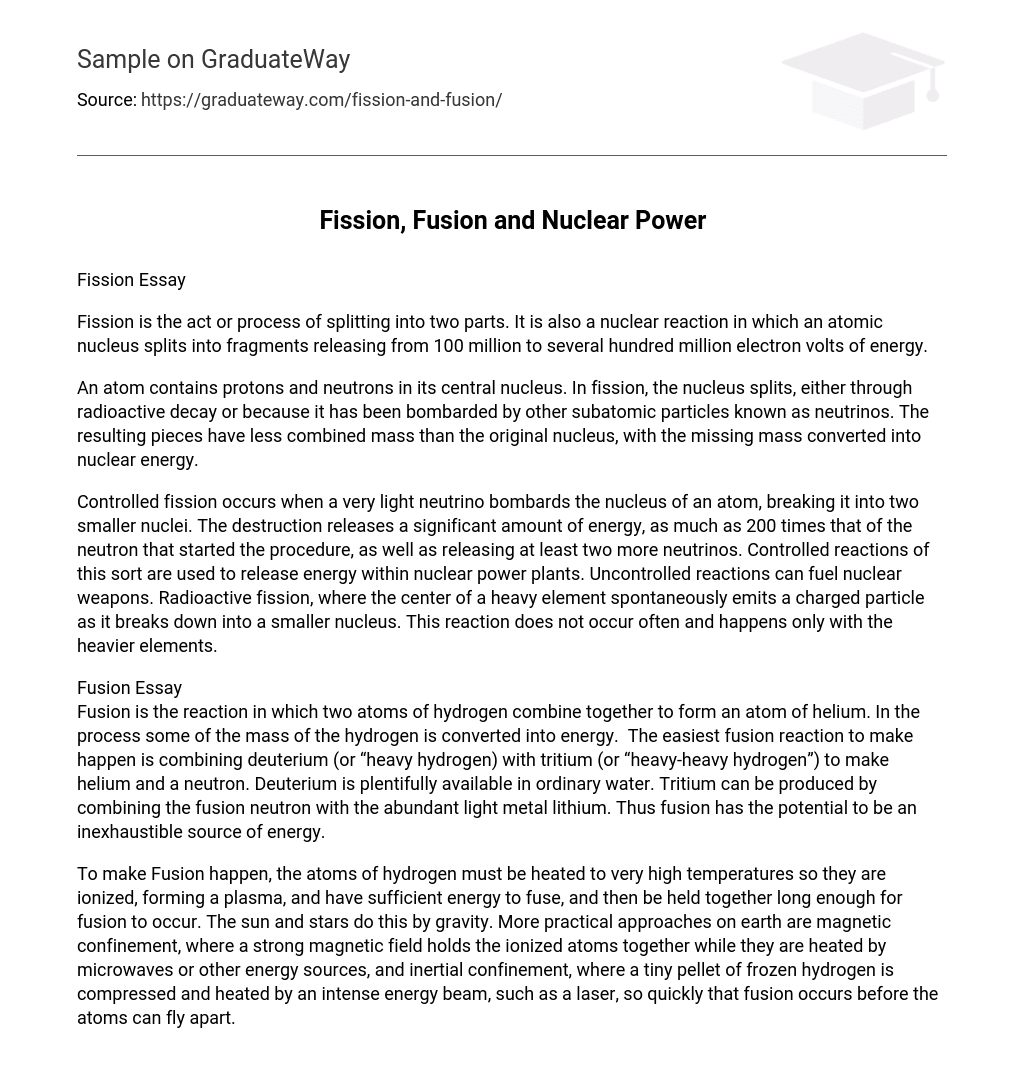Fission Essay
Fission is the act or process of splitting into two parts. It is also a nuclear reaction in which an atomic nucleus splits into fragments releasing from 100 million to several hundred million electron volts of energy.
An atom contains protons and neutrons in its central nucleus. In fission, the nucleus splits, either through radioactive decay or because it has been bombarded by other subatomic particles known as neutrinos. The resulting pieces have less combined mass than the original nucleus, with the missing mass converted into nuclear energy.
Controlled fission occurs when a very light neutrino bombards the nucleus of an atom, breaking it into two smaller nuclei. The destruction releases a significant amount of energy, as much as 200 times that of the neutron that started the procedure, as well as releasing at least two more neutrinos. Controlled reactions of this sort are used to release energy within nuclear power plants. Uncontrolled reactions can fuel nuclear weapons. Radioactive fission, where the center of a heavy element spontaneously emits a charged particle as it breaks down into a smaller nucleus. This reaction does not occur often and happens only with the heavier elements.
Fusion Essay
Fusion is the reaction in which two atoms of hydrogen combine together to form an atom of helium. In the process some of the mass of the hydrogen is converted into energy. The easiest fusion reaction to make happen is combining deuterium (or “heavy hydrogen) with tritium (or “heavy-heavy hydrogen”) to make helium and a neutron. Deuterium is plentifully available in ordinary water. Tritium can be produced by combining the fusion neutron with the abundant light metal lithium. Thus fusion has the potential to be an inexhaustible source of energy.
To make Fusion happen, the atoms of hydrogen must be heated to very high temperatures so they are ionized, forming a plasma, and have sufficient energy to fuse, and then be held together long enough for fusion to occur. The sun and stars do this by gravity. More practical approaches on earth are magnetic confinement, where a strong magnetic field holds the ionized atoms together while they are heated by microwaves or other energy sources, and inertial confinement, where a tiny pellet of frozen hydrogen is compressed and heated by an intense energy beam, such as a laser, so quickly that fusion occurs before the atoms can fly apart.





